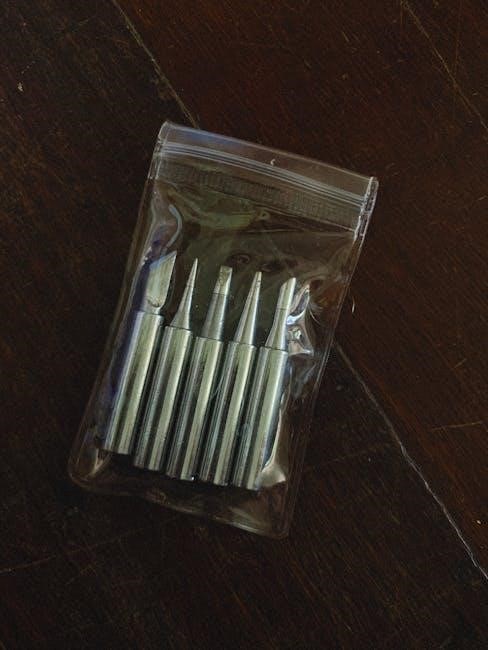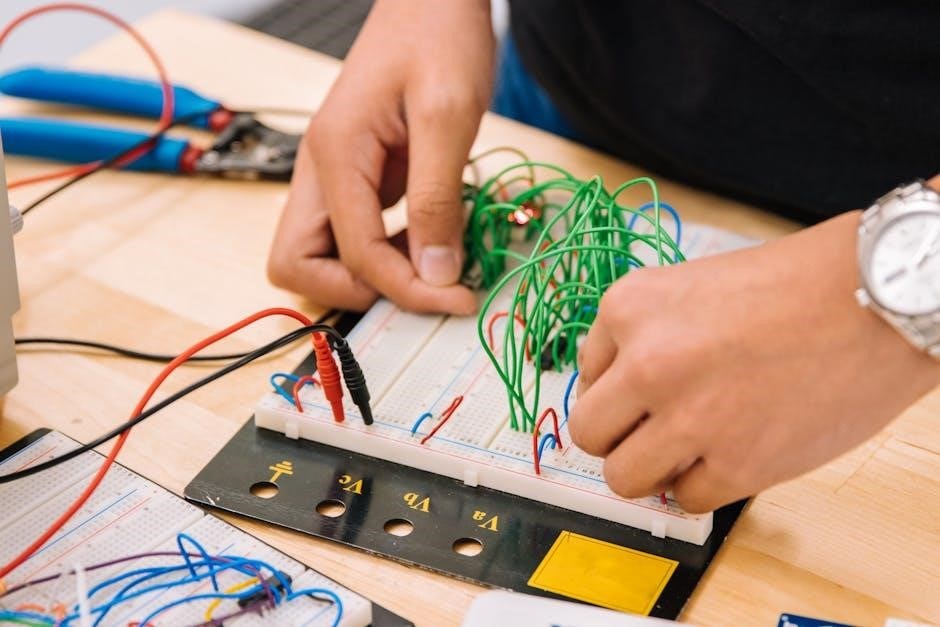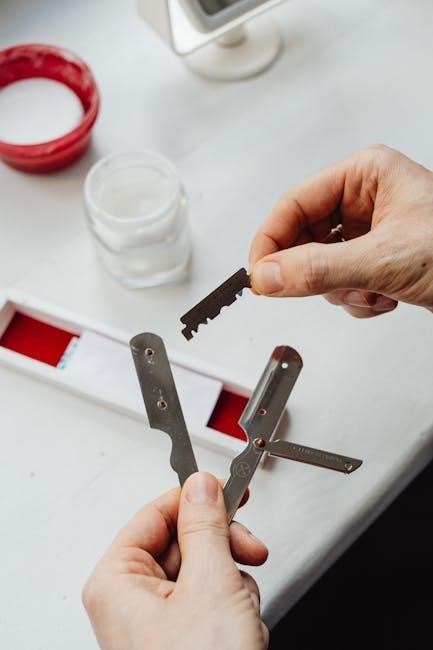The GS300 manual swap kit enables enthusiasts to replace the automatic transmission with a manual setup, enhancing performance and driver control. Popular among Lexus enthusiasts, it offers improved acceleration and a more engaging driving experience. The kit typically includes a transmission like the R154 or CD009, along with a compatible clutch and flywheel. This modification is particularly favored for its ability to retain OEM reliability while delivering the thrill of manual shifting.

1.1 Overview of the GS300 and Manual Transmission Benefits
The Lexus GS300, known for its refined power, gains enhanced performance with a manual transmission swap. A manual setup delivers better acceleration, driver engagement, and control. Enthusiasts often opt for this modification to maximize the car’s potential. Popular swaps, like the CD009 or R154, offer robust gearing and reliability. This upgrade transforms the driving experience, making it more responsive and thrilling, while retaining the GS300’s signature smoothness and luxury.
1.2 Importance of a Swap Kit for Enthusiasts
A manual swap kit is essential for enthusiasts seeking to enhance their GS300’s performance and driving experience. It offers improved control, acceleration, and engagement, transforming the car into a more dynamic machine. The kit provides all necessary components, ensuring compatibility and reliability. For those passionate about tuning and customization, it’s a gateway to unlocking the car’s full potential, making it a popular choice among Lexus enthusiasts worldwide.
Key Components of the GS300 Manual Swap Kit
The GS300 manual swap kit includes key components like transmission options (R154, CD009), ACT clutch and lightweight flywheel, and adapter plates with necessary mounts for a seamless installation.
2.1 Transmission Options (R154, CD009, etc.)
The GS300 manual swap kit offers multiple transmission options, including the R154 and CD009, both known for their durability and compatibility. The R154, a popular choice, is a robust 5-speed unit, while the CD009 provides a modern 6-speed setup with improved gear ratios. These transmissions are often paired with lightweight components like single-mass flywheels for enhanced performance. Enthusiasts favor these options for their reliability and seamless integration with the GS300’s engine.
2.2 Clutch and Flywheel Compatibility
Clutch and flywheel compatibility is crucial for a smooth manual swap. The ACT clutch and lightweight single-mass flywheel are popular choices, offering improved modulation and reduced weight. These components are specifically designed to work seamlessly with the R154 transmission, ensuring proper engagement and disengagement. Aftermarket solutions like these are essential for maintaining reliability while enhancing performance in the GS300 manual swap setup.
2.3 Necessary Adapter Plates and Mounts
Necessary adapter plates and mounts ensure proper alignment and secure installation of the manual transmission. These components, often included in swap kits, are designed to fit the GS300’s chassis and engine configuration. Durable materials like CNC-machined aluminum are commonly used for adapter plates, while custom mounts accommodate the manual transmission’s increased torque output. Proper installation prevents drivetrain damage and ensures smooth power delivery, making these parts essential for a successful swap.

Preparation for the Manual Swap
Preparation involves a thorough vehicle inspection, gathering essential tools, and addressing wiring and pedal adjustments to ensure compatibility and reliability for the manual swap.
3.1 Vehicle Inspection and Tools Required
A thorough inspection ensures the vehicle is ready for the swap. Check the engine mounts, drivetrain, and wiring for any damage. Essential tools include a socket set, wrenches, and a 32mm socket for the driveshaft. Specialized tools like a clutch alignment kit and transmission jack are recommended. OEM parts compatibility should be verified, and a professional mechanic’s assistance is advised for complex steps. Proper preparation minimizes installation risks.
3.2 Wiring and ECU Considerations
Wiring modifications are critical for manual swaps, as the ECU must recognize the new transmission. Repurpose existing sensors and connectors to maintain functionality. Ensure the clutch pedal wiring integrates seamlessly with the ECU. Reflash the ECU to remove automatic transmission dependencies, enabling proper manual operation. Use OEM-compatible connectors to avoid electrical issues. Consult forums or experts for wiring diagrams specific to your setup to ensure a smooth transition.
3.3 Brake and Clutch Pedal Setup
The brake and clutch pedal setup is crucial for seamless manual operation. Install a compatible clutch master cylinder and ensure proper alignment with the clutch slave cylinder. Use an ACT clutch and lightweight flywheel for improved modulation. The pedal assembly must be adjusted to provide optimal feel and engagement. Wiring integration ensures the ECU recognizes the clutch pedal position. Proper setup guarantees smooth shifting and reliable braking, enhancing overall driving performance and control.

Step-by-Step Installation Guide
Begin by removing the automatic transmission, then install the manual transmission with the appropriate adapter plate. Connect the driveshaft and shifter, ensuring proper alignment and secure connections for smooth operation.
4.1 Removing the Automatic Transmission
Removal begins with draining the transmission fluid and disconnecting the battery. Next, detach the electrical connectors, coolant lines, and shift linkage. Jack up the vehicle, support it with stands, and remove the crossmember. Carefully lower the transmission using a transmission jack, ensuring no damage to surrounding components. Finally, remove the transmission mounts and slide the unit out, taking note of any wiring or brackets that may need relocation.
4.2 Installing the Manual Transmission
Begin by aligning the manual transmission with the engine’s bellhousing, ensuring proper fitment. Secure the transmission using the provided adapter plate and mounts. Reattach the driveshaft, clutch, and shifter components, taking care to align the splines correctly. Tighten all bolts progressively to avoid uneven stress. Reconnect the electrical connectors and hydraulic lines, ensuring no leaks. Finally, test the clutch pedal operation and gear engagement to confirm proper installation.

4.3 Connecting the Driveshaft and Shifter
Once the manual transmission is installed, align the driveshaft with the transmission’s input shaft, ensuring proper splines alignment. Secure the driveshaft using the retaining nut or bolt. Reconnect the shifter assembly to the transmission, tightening all mounting bolts evenly. Verify the shifter’s range of motion and gear engagement smoothness. Finally, check for any leaks in the drivetrain connections and ensure all components are tightly fastened for safe operation.
Common Challenges and Solutions

Issues like ECU adaptation and clutch pedal setup often arise. Solutions include reprogramming the ECU for manual operation and ensuring proper clutch pedal alignment and adjustment.
5.1 Alignment and Fitment Issues
Proper alignment of the manual transmission components is crucial. Misalignment can lead to vibrations and premature wear. Ensure the adapter plate and mounts are precisely fitted to the engine block. Use shims or spacers if necessary to achieve accurate alignment. Consult the swap kit instructions for specific measurements and tolerances. Correct alignment ensures smooth operation and prevents damage to the drivetrain components over time. Regular inspections are recommended to maintain optimal fitment and performance.
5.2 Hydraulic vs. Cable-Operated Systems
Hydraulic and cable-operated systems differ in clutch actuation methods. Hydraulic systems use fluid pressure for smoother engagement, while cable-operated systems rely on physical linkage. Hydraulic setups are less prone to adjustment issues but can be more complex to bleed; Cable systems are simpler and cost-effective but may require more precise adjustments. Both options are viable, but hydraulic systems are often preferred for their ease of use and reliability in the GS300 swap.

5.3 Troubleshooting Common Problems
Common issues during a GS300 manual swap include difficulty shifting gears, clutch engagement problems, and reverse light malfunctions. Low transmission fluid or incorrect fluid type can cause shifting issues; use Toyota LV or equivalent. Clutch problems often stem from misaligned or incorrectly bled hydraulic systems. Ensure the reverse light switch is properly connected to avoid ECU recognition issues. Addressing these problems promptly ensures a smooth and reliable manual driving experience.

Post-Swap Maintenance and Tuning
Post-swap maintenance involves regular fluid changes and clutch adjustments. Replace transmission and differential fluids every 30,000 miles. Adjust the clutch during the break-in period for optimal performance and longevity.
6.1 Break-In Period and Clutch Adjustment
The break-in period for the manual swap requires careful driving to ensure proper clutch engagement. Avoid aggressive acceleration for the first 500 miles. Adjust the clutch pedal free play periodically to maintain optimal performance. Regular inspection of the clutch and flywheel ensures longevity. Proper adjustment prevents premature wear and guarantees smooth shifting. Follow manufacturer guidelines for best results and extended component life.
6.2 Gearbox and Differential Fluid Replacement
Regular fluid replacement for the gearbox and differential is crucial for smooth operation. Change gearbox fluid every 30,000 to 60,000 miles, using high-performance options like Red Line MT-90 or 75W-90. Differential fluid should also be replaced periodically, typically every 50,000 miles, with 80W-90 gear oil. Use a high-quality filter and ensure proper disposal of used fluids. This maintenance ensures longevity and optimal performance of the manual transmission system.
6.4 Tuning the ECU for Manual Operation
Tuning the ECU is essential for seamless integration of the manual transmission. Recalibrate engine parameters to accommodate the manual setup, ensuring proper clutch engagement and gear shifts. Use a tuner or reflashing tool to adjust throttle response and torque limits. Some kits, like the Fisch Racing setup, may require specific ECU modifications. Consult a professional to avoid engine issues and optimize performance for the swapped manual transmission system.

Community and Support Resources
Enthusiasts can find extensive support through forums like Serial Nine and Fisch Racing. These communities offer DIY guides, troubleshooting tips, and vendor recommendations, fostering collaboration and knowledge sharing.
7.1 Forums and Online Communities

Forums like Serial Nine and Lexus enthusiast groups are invaluable for GS300 manual swap projects. These platforms offer detailed DIY guides, troubleshooting tips, and vendor recommendations. Members share experiences, solving common issues like transmission fitment and clutch alignment. Such communities provide a wealth of knowledge, fostering collaboration and helping enthusiasts overcome challenges. They are essential for sourcing parts and staying updated on the latest swap techniques and trends.
7.2 Recommended Vendors and Suppliers
Recommended vendors include Fisch Racing and ACT for high-quality components like clutches and flywheels. These suppliers are trusted for their reliability and compatibility with the GS300. Fisch Racing offers comprehensive swap kits, while ACT provides durable clutch solutions. Ensure to cross-reference parts with your specific setup to avoid fitment issues. These vendors are frequently endorsed by enthusiasts for their performance and OEM-level quality, making them top choices for a successful manual swap.
7.3 DIY Guides and Tutorials
DIY guides and tutorials are abundant online, offering step-by-step instructions for the GS300 manual swap. Forums like Lexus enthusiast communities and YouTube channels provide detailed walkthroughs, including wiring diagrams and clutch installations. Popular resources include Fisch Racing’s swap kit instructions and ACT’s clutch installation guides. These tutorials are often supplemented by enthusiast experiences, making them invaluable for a successful and stress-free manual transmission conversion.
The GS300 manual swap kit offers a transformative driving experience, combining enhanced performance with the thrill of manual control. With components like the R154 or CD009, it delivers reliability and improved acceleration. Enthusiasts praise the kit for its seamless integration and OEM compatibility. While challenging, the swap is rewarding, especially with community support and detailed guides. For those seeking a more engaging drive, the GS300 manual swap is a compelling and achievable modification.
